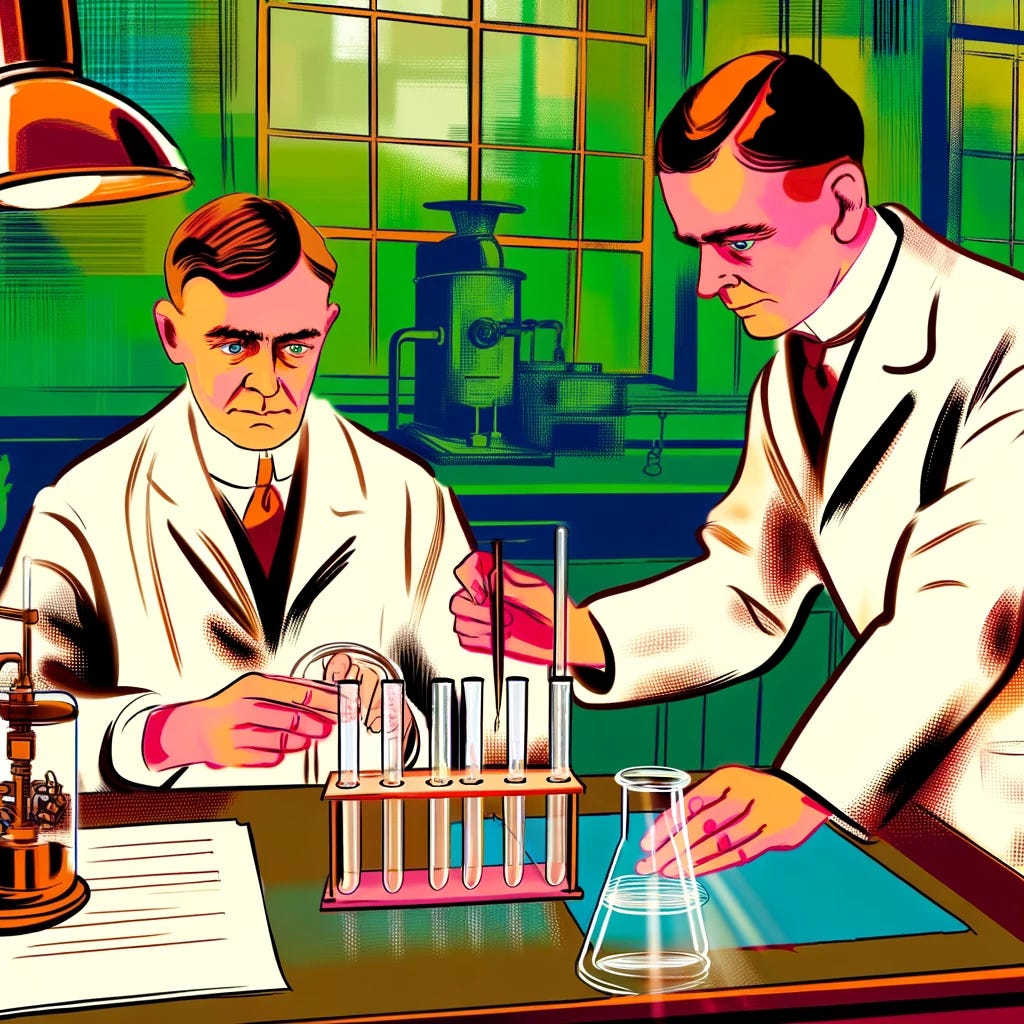Banting and Best
When you make a list of dynamic duos who have changed the world, a few names might come to mind.
Pierre and Marie Curie discovered two new elements together, explained what radioactivity was, and shaped the field of nuclear physics for the next century. Orville and Wilbur Wright used their knowledge of bicycles to create the first machine that could take off from the ground and fly on its own power. Steve Jobs and Steve Wozniak founded Apple computer.
A duo you might not recognize—but maybe should—is Banting and Best.
Before their contribution to the world, type 1 diabetes was pretty much a death sentence. Patients were often put on starvation diets, which seemed like a good idea at the time, but this would only temporarily stave off the inevitable.
After Banting and Best, tens of millions of people lived much fuller, longer lives by taking insulin every day.
Type 1 diabetes is an autoimmune disease where your immune system mistakenly attacks and destroys the cells in your pancreas th…
Keep reading with a 7-day free trial
Subscribe to Goatfury Writes to keep reading this post and get 7 days of free access to the full post archives.


